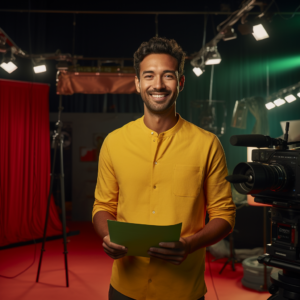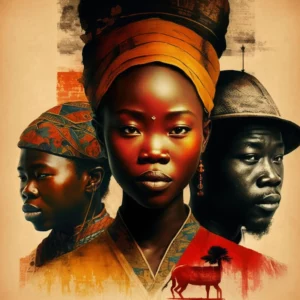
Cinema Camera Equipment Is Expensive
And yet, there are different levels of expensive in the world of Cinema and episodic television. The average A camera on a network television show is $90,000. The B camera may be just as expensive. Supporting cameras can range from $40,000 to $60,000. So why are these cameras so expensive? What separates them from the entry level cinema cameras?
At the end of the day, an entry level cinema camera with a great team will produce a better project than a green team with a great cinema camera. Tools are only as good as the people who are using them. That said, a number of options expensive cameras have make them far better tools.
Dynamic Range
Cinema cameras used by high-end video productions have great dynamic range. At its core, dynamic range is the ratio of light measured between two colors. In the real world, you rarely have black and white, yet degrees of light source reflectivity and intensity. Colors tend to transition into shadows or “roll off” to other shades. The better the dynamic range, the more realistic a motion picture will look. On set, in a professional video production environment, the dynamic range gives the production team the most wiggle room in post-production to make sure you get the perfect shot. If a shot is over exposed or underexposed, a camera’s dynamic range can save the shot. When shooting multimillion-dollar projects, every hour costs production tens of thousands of dollars. Imagine shooting for an afternoon and the cinematographer did not expose each shot properly. Two factors come into play.
1. The Camera’s dynamic range
2. The camera’s ability to shoot RAW
RAW
RAW is a recording file format processed directly from a camera’s image sensor. High-end cameras all have the ability to shoot RAW. In post-production, RAW video files can be manipulated as if you were actually on set. For instance, if your DP accidentally has your ISO set at 3200 and you are shooting on location outside. EVERY frame of that shoot would be unusable. If you shot that footage in RAW format, your post-production team will be able to manipulate the camera settings as if they were right the entire time.
High Fame Rate
This tool separates good cameras from great cameras. High Frame rates have become popular in mainstream media. Both in high-end productions and amount enthusiasts. I am reminded of a Dave Chappelle skit where he hilariously states everything looks better in slow motion. It’s true. Imagine a scene where two people are walking into a club. It can look cool, but it looks better in slow motion. Imagine a fight scene taking place. If the entire scene is shot at regular speed, sure it can look great, but when some scenes are speed ramped, it looks better. High-end video cameras have the ability to shoot at 60 fps, 120 fps, 240 fps. A lot of cameras have this ability. But the best ones can shoot 120 and 240 without having a crop factor.

For instance. The new Black Magic Pocket Cinema Camera 4k can shoot 120fps but has a 50% crop factor. So using the picture above. If you are shooting 24 or 60 fps your video camera is capturing the image within the red lines. As soon as you shoot 120 fps, your video camera is capturing within the blue lines. High-end cameras allow you to retain the full image on your sensor.
If you plan your shoots this can be a small detail. You can always choose a wider lens or move further back if space allows it.
Image Sensor Size
The holy grail of cinema cameras is 35mm. Why? Because feature films have been shot on 35 mm cameras and when the industry has practiced and performed on a standard size for a century, it’s hard to use anything else. 35mm is called a full frame lens.

With full frame cameras, if you put a 16mm lens on the camera, you are actually getting the 16mm lens’s full field of view. If you are shooting on a Micro four-thirds camera like the black magic pocket cinema 4k, it has a crop factor of 2 which means your 16mm lens acts more like a 32mm lens which is depicted by the small yellow picture above. The full frame camera will capture everything within the big yellow box above.
Full frame cameras are typically what is used on big video productions. They give yo the most options to capture the wide angles.
Now that you know what equipment to buy, check these articles out if you are looking to start your own production company:
How do Video Production Companies Work
How do Video Production Companies get clients
When you are looking for a video production company in Atlanta that knows the ins and outs of video equipment and how they affect your production, give us a call, we are happy to help.








